Tidying Up the Response to Marie Kondo
- katiemccain
- Mar 8, 2019
- 12 min read

I tend to favor a branching structure of teaching. Conversations act a bit like building blocks: seemingly heading in new directions, but still connected to what came before it. Last week my students were discussing inspiration porn, which led to the influence of viral content more broadly, which led to memes, which led to the latest memes, which landed us in a conversation about Marie Kondo.
“Does it spark joy?” came a voice in the back, just a hint of derision in the tone. I’m not even sure anyone else caught it, focused as they were (or at least, pretending to be focused) on the lecture I was giving. Looking back, I can see that it was a missed opportunity. I mean sure, I mentioned the recent, racist backlash against Kondo, but it didn’t become the focal point of the conversation in the way that it perhaps should have. I had too much else to say about arguments and ideology’s connection to humor, the persuasively fast-paced world of our online spaces, and the importance of allowing minority groups to speak for themselves. This semester’s class is a class on disability, not racism. I moved on, despite the fact that intersectionality is a Thing That Exists and I now regret that choice.
Let me remedy that here.


The backlash against Marie Kondo is a result of misogynistic racism. That should, but sadly does not, go without saying. I’ll be blunt: I’ve only watched Kondo’s Netflix show, Tidying Up With Marie Kondo. I haven’t read her books, knew anything about her system prior to Tidying Up hitting my queue, and I certainly don’t know enough about her religious beliefs to say what is or is not impacting her method. What I do know is that a Japanese woman—significantly using a translator—dropped a show with some of the most inoffensive advice I’ve ever seen and was met with caustic backlash, derision, threats, mocking, and infantilization. You do the math.
Even ignoring for a moment the clear ways in which Kondo is dismissed because she’s too Asian, too feminine, too “cute” and “child-like,” people seem unwilling to take her perspective for the thirty seconds required to realize there’s a wonderful logic at work here. Meaning, those who claim they just don’t like her normally cite two aspects of Kondo’s process that they deem “silly”: thanking objects prior to letting them go and greeting a house before starting the organization process.
You’ve got to already be pretty set in your determination to hate someone—someone who is only hoping to help others—in order to jump from “Kondo suggests expressing gratitude towards the things you’ve owned” to “Kondo thinks inanimate objects are alive and we should all cry anytime we throw something in the trash.” Yes. I’ve heard people say this. Now maybe I’m just an anxious mess of a human being, but getting rid of stuff is hard. What if I suddenly need it again but now I don’t have it, so I have to spend more money for another in the future? Guilt. What if a friend gave me this years ago and it’s literally just sat under my bed gathering dust, but the idea of throwing it out is offensive? Guilt. Am I really going to donate this perfectly good sweater just because it has this one itchy section that drives me nuts and I never end up wearing it? But I could wear it in a magical world where such irritations didn’t distract me to the point of madness. So theoretically that sweater is A-Okay even though I’ll still never ever choose it over my 1000% comfier sweatshirts. Guilt, guilt, guilt.



Kondo’s method helps alleviate that. Not the literal aspect of thanking necessarily, but the acknowledgement that this object served a purpose. Even if it wasn’t the purpose you assumed it needed to serve. I’m thrilled when my friends give me a gift, but that doesn’t require me to keep that gift until the end of time. Sometimes the memory of receiving the gift is enough (it's the thought that counts and all that). Maybe I didn’t wear the sweater very often, but you know what? That happens! Now I know my skin is stupidly sensitive and maybe I should avoid things with rayon in it from here on out. Whether we like phrasing it this way or not, each object does teach you something and acknowledging that can help ease the guilt of letting it go-----whatever your reasons are for taking it out of your life.
As for Kondo greeting spaces...do I really have to bring up the racism again? Granted, yes, that's not something American viewers are used to seeing on television, so I don't fault anyone for that knee-jerk reaction of, "This feels weird to me." (As a general rule I believe that those first thoughts tell us more about what we've been taught than something intrinsic about who we really are. Whether we act on those knee-jerk thoughts matter more and, contrasting that, whether we're willing to question them.) I mean, let's be honest: is Kondo taking a moment to acquaint herself with a space really any "weirder" than any other religious/spiritual practice, especially anything practiced here in the U.S.? I could provide you with a laundry list of things that would look pretty "weird" to anyone who hasn't grown up having them normalized. In fact, after thinking about it for a bit, I realized that Kondo's practice reminded me a lot of a Quaker's moment of silence. If I walked into class tomorrow and told my students, "From here on out we're going to sit in silence for a few seconds before class starts. Take this time to center yourself, acknowledge that you're moving onto a new task, and concentrate on your inner light"...a lot of my students would probably, initially, find that experience to be, well, weird.

Notably, Kondo's greeting only seems to last a few seconds (at least given how the show edits the moment). In one episode she ends up finishing long before one of her clients----or the client's wife. Seconds drag on, then what feels like minutes, the woman entirely unaware that Kondo and her wife have both finished. Because they let her continue. There's respect for how she wants to do things even if it's not how Kondo normally does them. Granted, the music and shots of the wife's vaguely amused expression encourages a bit of humor at her expense. We're informed that she can go on meditating for hours if anyone lets her. Meditation then-----already prevalent and hugely accepted here in America-----is the butt of the (kind) joke. Not the fact that Kondo prefers to take a moment to center herself.
Overall the show is infused with this kind of respect, extending to everyone involved. Far more than we've come to expect from reality television. There is no sense of judgement emanating from Kondo or, significantly, the cinematography itself. With the rare exception of moments like the one mentioned above (which, as said, is akin to a bit of light teasing), the show isn't interested in making us feel superior to these people-----one of the most overt (and perhaps unacknowledged) draws of reality TV. We're not shown shots of the mess overlaid with dramatic music. No tough love host barging in to yell about how you have to get your life in order Or Else. Even the before and after shots emphasize the client's personal achievement rather than a shocking change for the viewer to enjoy. Meaning, a lot of the time we can't see much of a difference between the two photos, or at least not as much as we've come to expect from these kinds of reveals. That's not because the clients haven't put in the work, but because Kondo's method isn't, or at least doesn't always have to be, about such visually dramatic change. Maybe you end up keeping most of your clothes because they do bring you joy. Kondo merely showed you how to store and display them in a more organized manner. Maybe you and your partner admit that you don't actually need twenty-seven mugs between you, but no one else is going to notice that newly acquired space unless you open the cupboards up. Which the show rarely does because that moment isn't about us. The clients know their kitchen is more organized and we, in turn, know the techniques that got them there. Tidying Up is one of the few self-help shows I've ever seen that actually emphasizes education over pure, mindless "Wow they're basically hoarders aren't they?" entertainment.




And yes, the show is educational. I use the term "merely" above to describe Kondo's advice, but that's disingenuous of me. After all, how many of us were actually taught how to organize? I'd wager that the majority of Americans grew up being told to clean their rooms, but unless you're naturally a neat freak like me, that can seem like a rather daunting task. Especially as we grow older and continually accumulate more stuff. Where do I begin? How do I manage it with an otherwise full schedule? What can I afford to get rid of and what's worth saving? If I keep it where the hell is it going to go? Did I ever learn how to start and maintain a cleaning habit long enough for it to become second nature? No? Then I guess I'll just keep piling my clothes on a chair because that's easiest in the short term and I've never really experienced that positive sense of accomplishment stemming from organization-----only frustration that my shirts remain a wrinkled, jumbled mess whenever I bother to try and put them in a drawer. As for the rest? Easier still to just shove it all under the bed.
Kondo does for organization what I (attempt at least) to do for writing. Any English nerd figures out paper writing through a combination of 1. Already being inclined towards those skills and 2. Years of practice that never quite feels like work because you actually enjoy doing it. (See: the hundreds of metas, reviews, debates, and blog posts just like this one that I threw myself into out of pure interest, honing those skills in the process.) For everyone else, "Write a paper" can sound like an excruciatingly daunting task. Sort of like "organize your whole house." So I break it down into more manageable chunks. Write down everything that seems significant in this primary source. (Pile all your clothes onto your bed.) Start connecting various details and testing out claims. (Decide, one by one, which articles of clothing you want to keep.) Bring those claims together under one, over-arching thesis. (Fold each piece of clothing and return them to your bureau.) It's all a matter of learning and then implementing the steps.
Admittedly, one of the slightly more reasonable criticisms I've seen (though I still use "reasonable" loosely here) is that Kondo's method is inherently ableist. Considering that many disabled and chronically ill people could never do the amount of work she's tasking them with. Now, ignoring the impossibility of tailoring advice to every person on the planet. And the number of times Kondo stresses that you should only use her method if you feel like it works well for you. And that the show presents us with a timeline spanning weeks, if not months, emphasizing that this is a long-term project for anyone. And that many people have already taken Kondo's method and tweaked it for a disabled life... we need to acknowledge that in many respects, Kondo's philosophy directly tackles mental and emotional disorders. More often than not we see that the mess in these people's lives is indicative of something much larger. Two gay men are desperate to get their house in order because they believe the space functions as a reflection of their relationship. If their parents don't see a serious household they may not be inclined to view their relationship as serious either. Another couple has a new baby on the way and sees this change as a crucial means of preparation. Still another wants another child, but not if they can't get the life they already have in order first. One woman struggles with the concept of her clothes sparking joy considering that she isn't currently at her ideal weight. These clothes serve a practical purpose-----fitting me-----even though I often hate them, so what now? For many it's a time to recognize that they keep so much stuff because something else is bothering them.


For example, in the last episode the viewers meet a woman who is faced with the prospect of donating an old dress. Considering that it no longer fits her, this seems like a pretty easy decision to make. However, we learn that this dress was a gift from her now deceased grandmother, something that she desperately wanted at the time and experienced great joy in receiving. That joy continues on today in the form of a memory—AKA, it’s functioning in the way that Kondo believes objects should. It still has a purpose in her life, even if that purpose isn’t practical.
As said, Kondo makes it abundantly clear that she’s not there to decide what is and is not a significant object. Emotionally speaking, one woman’s trash really is another woman’s treasure. Rather than guilting anyone with a, “Mmm. Is it really logical to keep a dress you no longer fit into?” Kondo leaves each client alone to make their decision. This struck me as a huge departure from more traditional reality TV. Rather than staying with each client and hovering over them judgmentally, Kondo explains each step of her process and then assigns the bulk of the work as homework. With the exception of the film crew themselves—and notably most of this part of the show is shot through home video instead—the clients are left alone to make their decisions. They’re given time away from the cameras and Kondo herself to figure out what’s important to them. A lot of time what we do see includes couples challenging one another on their choices—do you really need/want to keep that, or are you falling back on old habits?—but whether they choose to take that step forward or keep the comfort of familiar objects? That’s up to them.
In the case of our finale, the woman in question does decide to get rid of the dress. Because, as she explains, there are other objects in the house that can serve the purpose of reminding her of her grandmother. What’s important though is that she came to that decision on her own. In another, telling moment a wife brings up the cup her husband never drinks out of but insists on keeping, expecting Kondo to back her perspective that he should get rid of it. Instead, Kondo suggests that they use it as a decorative piece, easing the wife by getting a "useless" item out of the cupboards while allowing the husband to keep something that obviously has a lot of emotional weight to him. Neither the wife nor Kondo need to understand the weight, they just need to respect it.
Of course, Kondo isn't a licensed therapist there to deal with those problems, but she helps people who have various degrees of anxiety, with an equal variety of worries, come to that recognition about how they're often using objects as a stand-in for something else. She then re-conceptualizes decluttering their space as a healing act, not the scary, impossible thing it first seemed.



As the ridiculous drama regarding Kondo's stance on books attests (and trust me, as an English PhD student with nearly 2k books to her name, I am invested in this conversation) anyone who actually listens to her will realize that she's not interested in forcing anyone to get rid of anything they care about. Your space is minimalistic? Great! Your space is a knick-knack haven reminiscent of Aziraphale's library?

Also great! Provided it's sparking joy-----truly-----then Kondo isn't there to tell you you're doing anything wrong. She's a lot like the Fab Five that way, expressing to clients when and why they think a change is important, but never forcing anyone to make a change if they're actually against it. Their own, obvious struggle with discrimination is well worth highlighting, but it nevertheless stands out to me that the masses have accepted the Fab Five-----handsome men primarily from the U.S.-----in a way they'll probably never accept Kondo. Despite their similar philosophies and the fact that Kondo remains more accessible to poor viewers. Queer Eye does a lot to emphasize small, affordable changes, but that's still a new wardrobe, haircut, and grocery list to splurge on. Kondo works almost exclusively within what you already have. The only additions tend to be cheap bags and boxes (think shoe boxes) which, if you're one of the lucky Netflix clients, she provides for you. So let's be real. If a man had come up with "sparks joy" or, more likely, a white woman? We'd be seeing it all over Etsy and the only criticism leveled its way would have come with a healthy dose of fond indulgence. You all just don't like a Japanese woman telling you what to do.
After finishing Tidying Up I re-organized my books by color because I've always loved how that looks. Then I got rid of all the socks I'd been hanging onto because they weren't totally disintegrated yet, not because I was wearing them. I finally cleaned and reorganized my closet to the immense joy of my roommate's cat. She'd never been allowed in there before because my knitting yarn was one horrendous explosion of wool and acrylic. Now she can explore to her heart's content.
Organizing ultimately made me feel good. So did the show. The only thing I can truly compare it to is The Great British Bake Off. You know that previously unique feeling of, "Wow this show is educational AND heartwarming. I'm not used to reality television this fluffy!"? Yeah. Marie Kondo brings more of that to the U.S. I for one would like to thank her for that. And if Tidying Up isn't your thing? Basic respect goes a long way too.
Image Credit
Image #1: https://www.abcactionnews.com/entertainment/everyone-is-tidyingup-their-homes-on-
social-media-thanks-to-marie-kondo
Image #2-3: https://www.revelist.com/tv/marie-kondo-racism/14631/only-then-did-she-apologize-to-
anyone/6
Image #4-6: http://oak23.tumblr.com/post/182132092735/gratitude-tidying-up-with-marie-kondo-
2019
GIF #1: http://stardust-rain.tumblr.com/post/181711471405/all-that-were-communicating-to-the-
house-is-that
Image #7-10: http://stuckwith-harry.tumblr.com/post/182603645328
Image #11-12: http://oak23.tumblr.com/post/182132522050
GIF #2-7: http://stardust-rain.tumblr.com/post/182959376215/hasan-shares-his-valentines-day-
plans-marie
Image #13: https://twitter.com/hailsinbookland/status/1086354835224567809?lang=en
Image #14: https://www.independent.co.uk/arts-entertainment/books/features/marie-kondo-books-
netflix-tidying-up-world-book-day-a8810501.html
Image #15: https://www.deseretnews.com/article/900050302/marie-kondos-book-advice-in-
netflixs-tidying-up-has-upset-a-lot-of-bookworms-heres-why-konmari-method.html
Image #16: https://www.youtube.com/watch?v=2ZSXlNRRoGU
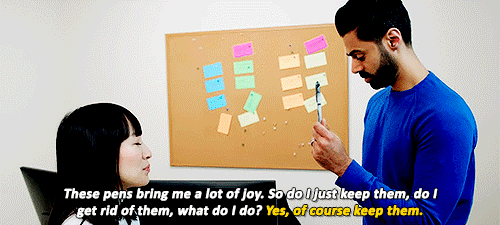
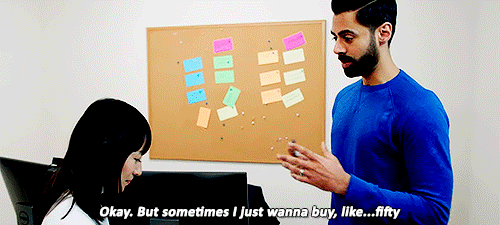
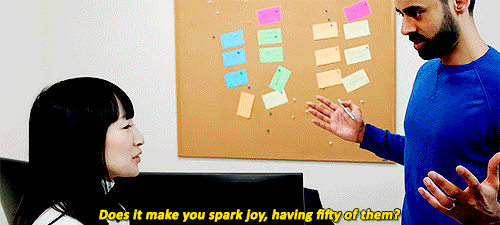
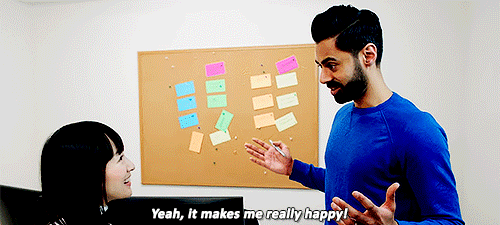
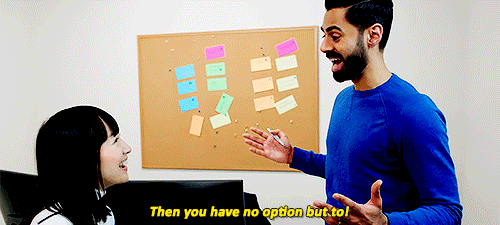
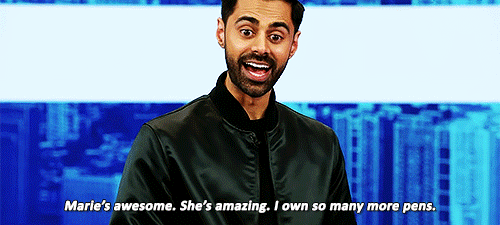
Comments